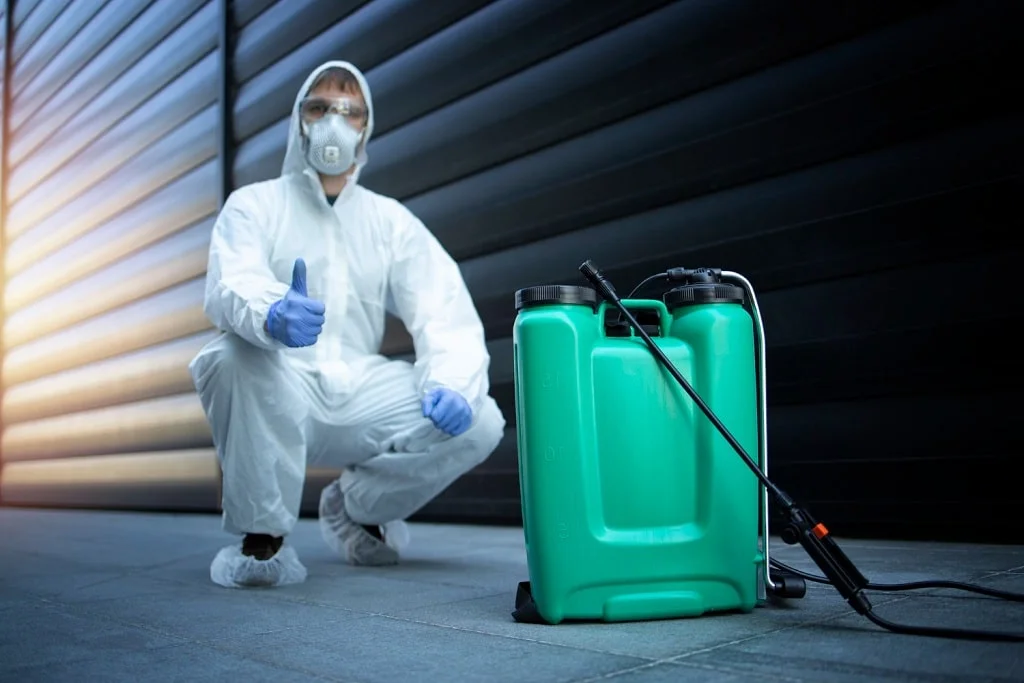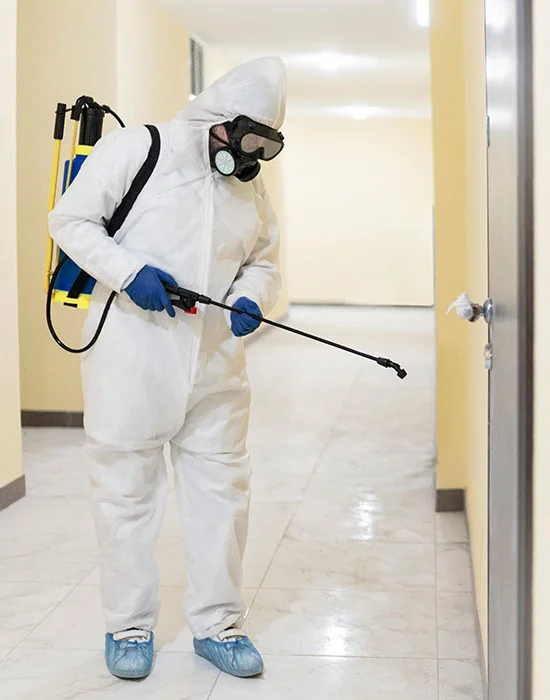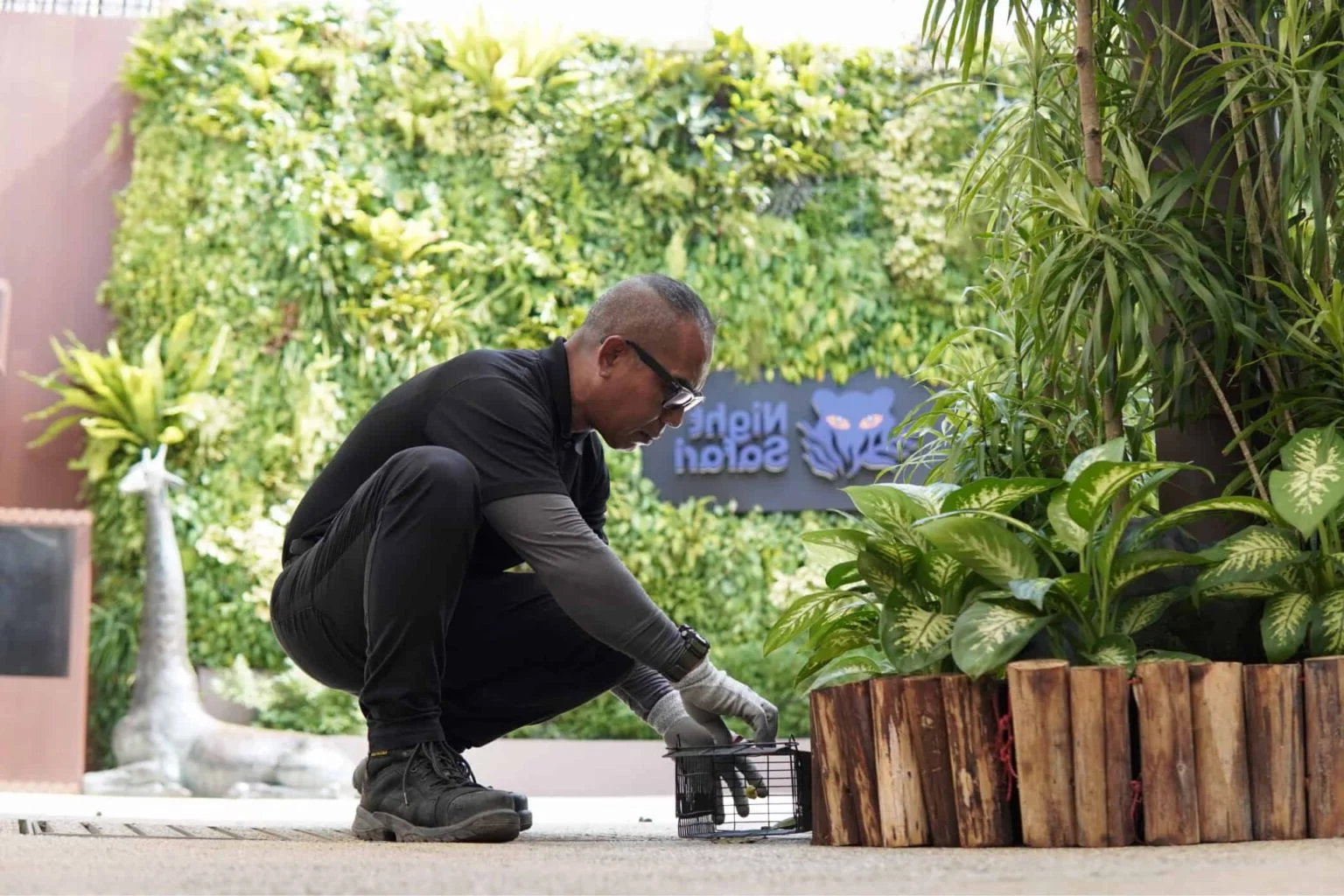From the rugged Appalachian highlands to the peaceful river valleys, West Virginia's diverse landscapes create unique pest management challenges. The state's mountainous terrain and distinct seasonal patterns—hot, humid summers and cold, snowy winters—influence pest behavior and create diverse microhabitats where different pest species thrive. Professional pest control in West Virginia requires understanding these regional differences and how the state's topography, abundant forests, and rural character affect pest populations and activity.
Homeowners and businesses throughout West Virginia face recurring challenges from pest infestations that can damage property, impact health, and disrupt daily life. That's why many residents rely on professional exterminators who understand the region's specific pest pressures. Local experts recognize that both preventive approaches and targeted treatments are essential to maintaining pest-free properties in West Virginia's varied environments. In this guide, we'll explore common West Virginia pest problems, effective management strategies including eco-friendly pest solutions, and why partnering with local professionals offers the most reliable protection for your home or business.
Facing a pest problem? Our West Virginia team provides
emergency pest control
24/7 and comprehensive
pest inspections to protect your property.
Contact us for prompt, reliable service!
Pest Control Challenges Specific to West Virginia
West Virginia's unique environment creates distinctive pest control challenges that require specialized knowledge and approaches. Here's why pest control in West Virginia demands tailored solutions:
-
Mountainous topography West Virginia's mountainous landscape creates diverse microclimates and elevational gradients that influence pest distribution and behavior. Communities at higher elevations in areas like the Allegheny Highlands experience different pest pressures than those in lower-lying regions along the Ohio River or in the Eastern Panhandle. These elevation differences affect not only which pest species are present but also their life cycles, seasonal patterns, and response to treatments. Effective pest management must account for these topographical influences, particularly when addressing invasive species that may spread differently across mountainous terrain.
-
Extensive forest coverage With over 78% of the state covered in forests, West Virginia properties often exist in close proximity to wooded areas that harbor native and invasive pests. This extensive forest coverage provides ideal habitat for wood-destroying insects, ticks, mosquitoes, and various wildlife pests that regularly move between natural and developed environments. Homes and businesses near forest edges face constant reinfestation pressure from these woodland sources, requiring more comprehensive and frequent pest management approaches than might be necessary in less forested regions.
-
Historic architecture Many West Virginia communities feature historic buildings, from Victorian-era homes in Wheeling and Charleston to traditional Appalachian structures in rural areas. These older buildings often incorporate construction methods and materials that create unique pest vulnerabilities—post-and-beam frames, fieldstone foundations, shake roofs, and other historic elements commonly provide harborage for insects and rodents. Effective pest management must protect these structures while respecting their historical significance and addressing the specific entry points and habitats they provide.
-
Rural infrastructure West Virginia's predominantly rural character means many properties rely on well water, septic systems, outbuildings, and other rural infrastructure elements that create distinct pest management challenges. Septic drain fields can attract certain insects, well houses provide shelter for rodents and snakes, and outbuildings often harbor various pests that can subsequently invade main structures. Properties with these rural features require specialized attention to these auxiliary structures and systems as part of comprehensive pest management planning.
-
Fluctuating seasonal patterns West Virginia experiences pronounced seasonal changes that drive predictable pest cycles. Spring thaws and summer humidity support rapid insect reproduction, fall cooling triggers mass movement of pests seeking winter shelter, and winter conditions force many pests into human structures. These distinct seasonal pressures require properly timed preventive treatments and different management approaches throughout the year. Climate shifts in recent years have further complicated these patterns, with milder winters allowing some pest populations to remain active longer and expand their traditional ranges.
These factors make informed, locally-adapted pest prevention particularly important for West Virginia property owners. Professional pest management companies familiar with these regional challenges can develop customized strategies that address West Virginia's specific environmental factors while protecting your property throughout the year.
Common Pests in West Virginia
West Virginia's diverse environments support a variety of persistent pests. Here are the most common invaders that West Virginia homes and businesses encounter:
Termites
Termite inspection being performed in Charleston
Eastern subterranean termites represent a significant threat to West Virginia properties, causing millions of dollars in damage annually to homes and buildings throughout the state. These destructive insects build underground colonies and can remain hidden within walls and foundations for years, causing extensive structural damage before signs become visible. While termite pressure varies across the state, properties in lower elevations and river valleys generally face higher risk than those in higher mountain regions.
Professional termite management typically begins with thorough termite inspection to identify current activity or conditions conducive to infestation. Treatment approaches may include soil treatments to create protective barriers, targeted applications for active infestations, monitoring systems to detect activity, and preventive measures to reduce vulnerability. For structures already experiencing termite damage, specialized treatment protocols combined with repair recommendations help address both the infestation and its effects. Many West Virginia homeowners choose annual termite inspections and ongoing protection plans as essential investments in preserving their property's structural integrity and value.
Ticks
Tick control application in Morgantown
West Virginia's extensive forests and abundant wildlife support significant tick populations, creating serious health concerns for residents and visitors. The state has one of the nation's highest incidences of Lyme disease, along with other tick-borne illnesses like Rocky Mountain spotted fever, ehrlichiosis, and anaplasmosis. Blacklegged ticks (deer ticks), American dog ticks, and lone star ticks are widely distributed throughout the state, with particularly heavy populations in wooded areas, along trail edges, and in tall grass habitats.
Professional tick management focuses on protecting yard areas where human-tick encounters are most likely to occur. Effective programs typically combine habitat modification recommendations (maintaining landscaped barriers between wooded areas and lawns, keeping grass short, removing leaf litter) with targeted treatments of vegetation where ticks quest for hosts. For West Virginia properties near wooded areas or with high deer activity, regular treatments throughout the warm season (typically April through October) provide the most reliable protection against these dangerous parasites and the diseases they transmit.
Stinging Insects
Removing a wasp nest in Huntington
West Virginia's wooded landscapes and rural properties provide ideal habitat for various stinging insects that can create painful and potentially dangerous situations. Yellow jackets, paper wasps, bald-faced hornets, and European hornets regularly establish nests around homes and outbuildings, particularly during spring and summer months. Yellow jackets are especially problematic in late summer and fall, when colonies reach peak size and workers become increasingly aggressive while foraging for protein and sugars.
Professional management of stinging insects requires proper species identification, safe removal or treatment of established nests, and preventive strategies to discourage future nesting. Treatment approaches vary significantly based on nest location, species behavior, and property characteristics, often requiring specialized equipment and protective gear for safe management. For properties with recurring stinging insect problems, preventive treatments to common nesting sites in early spring, before colony establishment, can significantly reduce summer issues and provide safer outdoor environments for families and pets.
Rodents
As temperatures drop in fall and winter, West Virginia properties face increased pressure from mice and rats seeking shelter from cold weather. House mice are the most common home invaders, while Norway rats more frequently invade outbuildings, barns, and properties in more densely populated areas. Deer mice, which can transmit hantavirus, often infiltrate cabins, seasonal properties, and homes in rural and mountainous regions. These persistent invaders not only damage property through gnawing and nest building but also contaminate food, spread diseases, and trigger allergies.
Effective rodent control requires a comprehensive approach that adapts to seasonal pressures and property characteristics. Professional management typically combines thorough exclusion work to seal entry points (particularly important before winter), strategic placement of monitoring and control devices, removal of attractants, and ongoing maintenance to prevent reinfestation. For many West Virginia homes, particularly those in rural areas or near agricultural operations, fall prevention measures provide essential protection before winter weather drives increased rodent invasion pressure.
Brown Marmorated Stink Bugs
The brown marmorated stink bug has become an increasingly significant seasonal pest throughout West Virginia, with particularly heavy populations in the Eastern Panhandle and Ohio Valley regions. These invasive insects spend summer months feeding outdoors, then seek shelter in homes and buildings as temperatures drop in fall. While they don't cause structural damage or reproduce indoors, their mass invasions and unpleasant odor when disturbed create significant nuisance issues for many homeowners.
Effective stink bug management focuses on preventive measures implemented before fall invasion periods begin. Professional treatment typically includes sealing potential entry points, applying targeted treatments to exterior walls and entry areas, and providing specific recommendations for reducing attraction factors. Once these pests have entered wall voids and attic spaces, control becomes more challenging, making preventive approaches the most effective strategy for West Virginia homes experiencing recurring seasonal invasions.
Eco-Friendly Pest Control Approaches
With West Virginia's breathtaking natural landscapes and strong outdoor traditions, many residents and businesses prioritize eco-friendly pest solutions that effectively address pest problems while minimizing environmental impact. Modern integrated pest management (IPM) approaches provide effective control with reduced reliance on chemical treatments. This comprehensive strategy combines inspection, monitoring, habitat modification, exclusion, biological controls, and targeted applications of reduced-risk products only when necessary.
Many West Virginia pest control providers now offer green service options that provide effective pest management while protecting the environment. These programs often utilize botanical insecticides derived from plant oils, mechanical controls like traps and exclusion features, and highly targeted applications that minimize impact on non-target organisms. For properties near sensitive areas like the New River, Greenbrier River, Monongahela National Forest, or organic farms, these eco-friendly approaches help maintain effective pest control while protecting West Virginia's precious natural resources and outdoor recreation areas.
West Virginia Watershed Protection
Our West Virginia pest specialists are trained in watershed-friendly practices that protect the state's streams, rivers, and groundwater while still providing effective pest management for your property.
Below is a comparison of different eco-friendly pest management approaches commonly used in West Virginia:
| Approach |
Benefits |
Best Applications |
| Physical Exclusion |
Prevents pest entry without chemicals; provides long-term protection; eliminates need for repeated treatments.
|
Rodent-proofing rural homes, preventing stink bug entry in fall, protecting outbuildings from wildlife intrusion.
|
| Habitat Modification |
Reduces conditions that attract pests; provides sustainable long-term solutions; decreases need for product applications.
|
Creating tick buffer zones, reducing stinging insect attraction, managing landscape to discourage rodents around structures.
|
| Mechanical Controls |
Directly removes pests without chemicals; immediate results; precisely targeted to problem areas.
|
Vacuum removal of overwintering pests, trapping for rodents in sensitive areas, physical removal of wasp nests when accessible.
|
| Botanical Treatments |
Derived from plant compounds; typically lower toxicity; break down rapidly in the environment.
|
Perimeter treatments using plant-based ingredients, tick control in yards with children and pets, treating for stinging insects near gardens.
|
| Targeted Baiting |
Minimal product use; focuses on specific pest colonies; reduced environmental exposure through contained delivery.
|
Termite control using monitoring stations, rodent management with secured bait stations, yellow jacket reduction with protein baits.
|
In West Virginia's diverse environments—from the highlands of Pocahontas County to the river valleys of the Ohio and Kanawha—these eco-friendly approaches can be tailored to address specific pest challenges while protecting the state's natural resources. Professional pest management companies typically begin with a comprehensive inspection to identify the most environmentally appropriate solutions for each unique situation.
Residential vs Commercial Pest Control
Residential Pest Protection
West Virginia homes face diverse pest challenges based on their location, architecture, and surrounding environment. Residential pest protection programs typically focus on creating defensive barriers while ensuring treatments are safe for families, pets, and the environment. Many West Virginia homeowners opt for quarterly service plans that adapt to seasonal pest cycles, with additional attention during high-pressure periods like summer tick season, fall stink bug invasions, or winter rodent pressure.
From historic Charleston and Wheeling properties to mountain cabins in Tucker County to rural farmhouses in the Eastern Panhandle, residential service begins with a comprehensive inspection that identifies current pest issues, potential vulnerabilities, and conditions that might attract pests. Treatment plans are then customized for each property, taking into account specific construction features, surrounding habitat, and seasonal pest pressures. For vacation properties in destinations like Canaan Valley, Snowshoe, or near state parks, specialized programs address the unique challenges of periodic occupancy and wilderness proximity.
Commercial Pest Control
West Virginia businesses require specialized pest management that addresses industry-specific needs while meeting regulatory requirements. Commercial pest control programs are designed to protect reputation, prevent product contamination, and ensure compliance with health codes and industry standards. From Charleston's healthcare facilities to Morgantown's restaurants to Martinsburg's warehouses, each business sector faces distinct pest management challenges requiring tailored approaches.
Commercial service typically involves more comprehensive documentation, including detailed service reports, monitoring device placement maps, and trend analysis to identify and address emerging issues before they become problems. Many West Virginia businesses implement Integrated Pest Management programs that emphasize prevention through improved sanitation, exclusion, and structural modifications, with targeted treatments only when necessary. The state's tourism industry, healthcare facilities, food processing operations, and growing distribution sector require particularly vigilant pest management to maintain quality standards, protect customer experiences, and ensure regulatory compliance.
From residential pest protection plans to customized
commercial pest control solutions, we provide expert services throughout West Virginia –
contact us today to protect your property!
Why Choose Local West Virginia Pest Control Experts?
Working with pest control professionals who understand West Virginia's unique challenges offers significant advantages. Here's why partnering with local experts provides better results for your home or business:
-
Topographical expertise West Virginia's mountainous landscape creates diverse microclimates and elevation-influenced pest patterns that local professionals understand intimately. They know how pest pressures differ between river valleys like the Kanawha and Ohio, mountain communities in the Alleghenies, and the varied Eastern Panhandle. This regional knowledge leads to more accurate identification and more effective, targeted treatment strategies than standardized approaches from national companies unfamiliar with West Virginia's unique environmental conditions.
-
Rural property experience With West Virginia's predominantly rural character, local pest control experts understand the unique challenges of managing pests in countryside settings. They're familiar with outbuilding protection, well house treatments, issues with septic systems attracting insects, and other rural-specific concerns that urban-focused companies might overlook. This specialized knowledge is particularly valuable for properties outside major population centers.
-
Seasonal timing precision West Virginia's distinct seasonal patterns significantly impact pest behavior and treatment effectiveness. Local experts understand the optimal timing for various preventive treatments—when termite swarms typically emerge in Charleston, when stink bugs begin seeking shelter in Martinsburg, or when tick activity peaks in different regions. This timing precision maximizes effectiveness while often reducing the total amount of product needed.
-
Historic property knowledge Many West Virginia communities feature historic architecture with unique pest vulnerabilities. Local professionals understand how to effectively protect these cherished structures while respecting their historical significance and addressing the specific entry points and harborage areas they provide. This specialized knowledge is particularly valuable for properties in historic districts or structures with traditional Appalachian building features.
-
Emergency response capability When facing urgent situations like stinging insect nests near entrances, tick infestations in yards where children play, or rodent intrusions, local providers can respond quickly with technicians familiar with your area. This rapid response capability is vital for emergency pest control situations that require immediate attention to protect family, employees, customers, or property.
By choosing local professional exterminators who understand West Virginia's unique conditions, you get more effective, responsive service tailored to your specific pest challenges and property needs—all from providers who live in and understand the communities they serve.
Don't let pests threaten your West Virginia property. Our local experts deliver effective pest control in West Virginia with customized solutions –
schedule your inspection today!
Top Cities for Pest Control in West Virginia
Different regions across West Virginia face varying pest challenges based on their geography, development patterns, and local environments. Here are some key West Virginia communities and the unique pest management challenges they face:
Charleston
As West Virginia's capital and largest city, Charleston faces diverse pest challenges influenced by its river valley location, mix of historic and modern buildings, and surrounding hillsides. The Kanawha River corridor creates habitat for moisture-loving pests, while older neighborhoods like South Hills and the East End feature historic homes where termites, carpenter ants, and rodents find numerous entry points and harborage areas. The city's position in a valley surrounded by wooded hills means constant pressure from wildlife and forest insects moving into urban areas. Commercial districts face typical urban pest challenges including rodents in restaurant areas and occasional cockroach issues in multi-unit buildings. The combination of river humidity and valley topography creates microclimate effects that influence pest activity throughout the year.
Martinsburg
Located in the Eastern Panhandle, Martinsburg experiences different pest pressures than much of the rest of the state due to its lower elevation, distinct climate patterns, and proximity to Maryland and Virginia. The area faces some of West Virginia's highest pressure from brown marmorated stink bugs, with massive seasonal invasions affecting many properties during fall months. The region's milder climate supports longer activity seasons for many pests, while the mix of urban development, agricultural land, and native forest creates diverse pest habitats. Historic properties in downtown Martinsburg require specialized attention for termites and other wood-destroying organisms, while newer subdivisions expanding into previously rural areas often experience significant pest pressure as development disturbs established habitats.
Seasonal Pest Guide for West Virginia
Spring (March-May)
- Termite swarms emerge
- Tick activity begins
- Wasps start building nests
Recommendation: Schedule annual termite inspection and implement tick prevention before outdoor activity increases.
Summer (June-August)
- Tick populations reach peak activity
- Stinging insect colonies expand
- Mosquitoes thrive in humid conditions
Recommendation: Maintain tick treatments and monitor for wasp nests around structures.
Fall (September-November)
- Stink bugs seek winter shelter
- Rodents begin moving indoors
- Yellow jackets become more aggressive
Recommendation: Seal entry points and implement preventive treatments before pests move indoors.
Winter (December-February)
- Rodent activity intensifies indoors
- Occasional stink bug activity on warm days
- Overwintering insects in attics and walls
Recommendation: Focus on indoor pest management and maintain rodent control systems.
What Our West Virginia Clients Say
"After years of battling stink bugs every fall in our Martinsburg home, we finally found a solution that works. Their preventive treatment in late summer completely stopped the invasion we used to get. We haven't had a single stink bug inside since working with them, which seemed impossible after years of dealing with hundreds each season."
- Jennifer M., Martinsburg
★★★★★
"Living in rural Pocahontas County means constant tick pressure during warm months. Their comprehensive yard treatment has transformed our property from a high-risk area to a safe place where our children and pets can play without constant worry. The technicians are extremely knowledgeable about local tick species and always take time to answer our questions."
- Michael T., Pocahontas County
★★★★★
"As a restaurant owner in downtown Charleston, maintaining a pest-free environment is absolutely critical for our reputation. Their commercial service has been outstanding, keeping our establishment protected while using eco-friendly methods that align with our values. The detailed documentation they provide has been invaluable during health inspections."
- David L., Charleston
★★★★★
Frequently Asked Questions
How often should West Virginia homeowners schedule pest control services?
Most West Virginia homes benefit from quarterly pest control service to address our state's distinct seasonal pest cycles. This typically includes spring treatments as insects emerge and termites become active, summer protection focusing on ticks and stinging insects, fall prevention for stink bugs and rodents, and winter maintenance to address indoor pest activity. However, specific circumstances might require different schedules—rural properties often face different pressures than those in more developed areas, homes in the Eastern Panhandle might need additional attention for stink bugs, and properties in heavily wooded areas might benefit from more frequent tick treatments during warm months. During your initial inspection, our technicians will recommend an optimal service schedule based on your property's location, construction features, surrounding environment, and specific pest history.
What's the best approach to preventing stink bug invasions in Eastern Panhandle homes?
Effective stink bug prevention for Eastern Panhandle properties requires a multi-faceted approach implemented before these insects begin seeking winter shelter. Our most successful strategy combines several key elements: First, we recommend a professional exterior treatment applied to siding, eaves, entry points, and foundation areas in late August or early September, before cooling temperatures trigger migration behavior. This creates a protective barrier that deters bugs as they approach your home. Second, comprehensive exclusion work is essential—sealing cracks around windows, doors, utility penetrations, and foundation gaps eliminates entry routes that stink bugs exploit. We pay particular attention to areas around chimneys, exhaust vents, window air conditioners, and other common entry points specific to the construction methods common in Eastern Panhandle homes. For properties with recurring severe issues, we sometimes recommend follow-up treatments in mid-fall to refresh protective barriers during peak invasion periods. Additionally, we provide guidance on complementary measures like reducing exterior lighting during peak activity periods (as lights can attract these pests) and removing harborage areas near the foundation. For many Eastern Panhandle residents who have struggled with these persistent invaders, this comprehensive prevention system has transformed fall from a season of constant vigilance and frustration to one where they can simply enjoy the region's beautiful autumn without the stress of daily stink bug battles.
How do you help protect families from tick-borne diseases in West Virginia?
With West Virginia's high incidence of Lyme disease and other tick-borne illnesses, our approach to tick protection focuses on creating safer outdoor environments while educating families about comprehensive prevention. Our tick management program begins with a thorough property assessment to identify high-risk areas—woodland edges, ornamental plantings, stone walls, tall grass areas, and zones frequented by wildlife. Based on this assessment, we develop a customized management plan that typically includes: creating buffer zones between wooded areas and lawns or recreational spaces; targeted applications to vegetation where ticks quest for hosts, focusing particularly on transition zones between woods and maintained areas; and recommendations for landscape modifications that reduce tick habitat, such as clearing leaf litter, keeping grass shorter in high-use areas, and creating barriers with materials like wood chips or gravel between wooded edges and lawns. For properties with children, pets, or frequent outdoor activities, we recommend a schedule of treatments during the active season (typically April through October in most parts of West Virginia), with timing adjusted based on seasonal conditions and specific tick species prevalent in your area. We complement these professional services with education about personal protection measures like proper clothing, repellent use, and routine tick checks after outdoor activities. This comprehensive approach combines environmental management with practical family protection strategies, significantly reducing tick encounter risks while still allowing families to enjoy West Virginia's beautiful outdoor spaces.






